Esta web está especializada en películas clásicas y a cada una le dedica un artículo bastante extenso, con críticas, datos biográficos, opiniones, fotos vintage y su propio punto devista. Tiene un índice con unas 200 películas.
(English text)
Moviediva provides thoughtful writing about classic films, with reviews containing biographical and production details, critical opinion from old and new sources, photos from a collection of vintage movie-star scrapbooks and the moviediva's own definite point of view.You can search the Index for reviews of over 200 great films
From Here to Eternity (1953) Directed by Fred Zinnemann. Burt Lancaster, Montgomery Clift, Deborah Kerr, Donna Reed, Frank Sinatra (118 min).
Oscar's Best Picture of 50 years ago depicts the isolation and boredom of a Honolulu army post just before December 7, 1941, changes everything. The taboo-shattering lust and institutional brutality portrayed James Jones' novel were first thought unfilmable. Lancaster and Kerr's surf-kissed embrace is one of the classic romantic scenes in movies. Powerhouse motifs include Clift's struggle with the clash between individualism and a military career, Reed's scandalous "party hostess" and Frank Sinatra's shattered image as a boyish crooner.
From Here to Eternity was a huge best seller, the author catapulted to sudden fame. Published in 1951, it sold 3 million copies. Jones received both international critical praise and the 1952 National Book Award. He'd seen bloody combat on Guadalcanal, but he chose to write about the peacetime army, perceiving it to be unexplored literary territory. Frank McShane, his biographer, says, "He had appeared like a comet from the heart of America, and he wrote with a directness and truthfulness that recalled such distinctly American writers as Walt Whitman and Mark Twain."
The novel's protagonist, Robert E. Lee Prewitt enlists, like his creator, hoping to find a sense of belonging lacking in his own family. Jones grew up in the small town of Robinson, Illinois, later depicted in his first post-Eternity novel Some Came Running. His childhood was unhappy, he didn't do well in school, and with few prospects he enlisted in the army as soon as he turned 18. The routine and the camraderie suited him and he worked hard at being a good soldier. He was stationed at sleepy Schofield Barracks in Hawaii and had plenty of time for reflection. "The reading of Look Homeward, Angel changed his life," asserts his biographer. "His unfocused feelings of failure and unhappiness found a possible outlet, and at last he had a sense of purpose…In the unlikely moment of mowing the grass at Hickam Field, he suddenly knew, as he said, that, 'I had been a writer all my life without knowing it or having written.'"
Much of his first novel was based on this experience, although it is not strictly autobiographical. His first editor at Charles Scribner's Sons was Maxwell Perkins who had worked with Jones' idol Thomas Wolfe, as well as Fitzgerald and Hemingway. The author's moody publicity photos showed him in a French sailor's striped t-shirt, signaling he was one of a new generation of writers, with perhaps a whiff of Beat rebellion. Other aspirants to the title of Great American WWII Novel included The Naked and the Dead, by Norman Mailer, The Young Lions by Irwin Shaw, The Caine Mutiny by Herman Wouk and Battle Cry by Leon Uris. These novels would soon join Jones' in what Philip D. Beidler called the "big war-big book-big movie" category.
In paperback, Eternity is a densely packed 950 pages, much longer than any popular novel these days. It is not hard to understand why it was considered almost impossible to adapt. The writing is raw for its time, both in its language and the depiction of sex. There was a lot of squabbling with Perkins over how many uses of the "f-" and "sh-" words could be permitted in the repressive atmosphere of the 1950s. Mailer's The Naked and the Dead, a combat novel, uses the curiously muted "fug" instead of the actual "f" word, used copiously in Eternity. Jones himself was extremely profane in his speech and an enthusiastic patron of brothels, and many felt his frank writing spoke clearly to the post-war American experience. Beidler wrote, "For as a novel of WWII, it is uniquely able to locate the American experience of war in its actual ideological provenance: the world of the army as a teeming microcosm of depression-era cast-offs and misfits, time-serving professionals and cynical fascists, wallowing in their routinized misery, with solace only in the clubs, the bars, the brothels, the gambling shacks, all waiting for the end somewhere out on the edge of the empire."

Sinatra, Clift, producer Adler, author Jones
Many studios toyed with the idea of filming the popular novel, but abandoned it as unworkable, due to length, the conflicted view of the military and because the censorable language and subject matter impossible to depict under the still enforced Production Code. A number of screenwriters took a crack at it for different studios without success, including Jones himself, who gutted his own novel in the hopes of getting it on the screen. He wanted to realize as much money as possible from the movie sale and said, "I don't give a damn what they do to the movie, the book will stand by itself long after the movie is forgotten." His psychic powers failed to discern that, 50 years later, many more people experience From Here to Eternity as a movie than as a book. The combined notoriety would make him, at 31, a life-long celebrity, in spite of the fact that his subsequent writing would never be as well received as his debut.
Harry Cohn of Columbia paid $82,000 for the screen rights, and gossips called it Cohn's Folly. Perhaps, it was whispered, Cohn was too crude to know how crude the novel was. The military said firmly, "No film based on this novel could benefit the Army." They were concerned about the accusations of condoned brutality, and that the families of servicemen would be horrified by the language and behavior of their sons and husbands away from the civilizing influence of women. It would certainly not increase morale or enlistment, a major reason for the Army to choose to participate. But, without military cooperation everything about the film would scream "fake." Producer Buddy Adler had been a Lt. Colonel in the Signal Corps during WWII and he brought his influence to bear. Writer Daniel Taradash, a pre-Pearl Harbor inductee, wrote a screenplay that smoothed over the Army's major objections. He eliminated all references to both male and female prostitution, tempered the brutality of the stockade scenes, and punished Captain Holmes (who in the book is not reprimanded for his misconduct, but receives a promotion). At that point, the Army relented, offering officers who would serve as technical advisors, troops, and the use of Schofield Barracks in Hawaii as a location.The film remains powerful without the excised story elements. The budget was set at $2.5 million. A nation-wide search of Army surplus stores yielded pre-Pearl Harbor style Springfield rifles, canvas leggings, campaign hats and flat steel helmets. The extras, real soldiers, drilled to learn the use of the outdated equipment.
Director Fred Zinnemann insisted on black and white, "color would have made it look trivial" and the film did not use any of the popular new widescreen ratios. Daniel Taradash suggested him to Cohn because he liked the way soldiers were depicted in some of Zinnemann's earlier films. The Search (1947) was filmed on location in the ruins of post-war Germany and starred Montgomery Clift immediately after his debut in Red River. Zinnemann characterized Clift as "exuberant and full of energy, he was an electrifying personality." Two years later, Zinnemann directed The Men, a story about paralyzed WWII veterans starring Marlon Brando, and then made a film about an Italian war bride, Teresa. In 1951 he directed High Noon, with Gary Cooper. Zinnemann was hesitant to make Eternity for a number of reasons, including an instinctive mistrust of Harry Cohn. But, he also worried, "There was an automatic respect for Federal authority. To voice doubts about any of its symbols, the Army, Navy, or FBI was to lay oneself open to deep suspicion. McCarthyism was still very much alive and filming a book so openly scathing about the peacetime Army…was regarded by many as foolhardy if not downright subversive."

Clift, Reed and director Zinnemann at far right.
Cohn had wanted Columbia contract player Aldo Ray to play Robert E. Lee Prewitt. He still had hopes of making Ray a big star, and thought he looked like a boxer. But director Zinnemann felt Montgomery Clift was a much better casting choice. "He was no soldier, and no boxer and probably a homosexual" Cohn ranted. But Zinnemann felt the key to Prewitt's character was Jones' description of him as "a deceptively slim young man," and because the "story was not about a fellow who didn't want to box: it was about the human spirit refusing to be broken." Clift submerged himself in the character, learned to play the bugle (even though he knew he'd be dubbed) and took boxing lessons. Zinnemann said, "Clift forced the other actors to be much better than they really were. That's the only way I can put it. He got performances from the other actors, he got reactions from the other actors that were totally genuine."

Burt Lancaster was the one actor whose casting was without conflict. His portrayal of Sgt. Milt Warden was everything a WWII hero should be, "tough, gentle, fair, virile, brave and focused, Warden was an apotheosis of postwar American manhood." (Buford). Many of his prior roles had been somewhat lightweight, and he was conscious of the importance of the film. He was somewhat intimidated by Clift's skill and intensity and said, "I'd never worked with an actor of Clift's caliber before. I was afraid he was going to blow me right off the screen."
Eli Wallach was supposed to play Maggio, but Frank Sinatra, whose acting career was on the skids, lobbied hard for the part. Cohn, along with most in Hollywood, thought of Sinatra as "the fella who danced with Gene Kelly in MGM musicals." But, Sinatra had read the novel and felt this was a role that could turn his career around, as indeed it did. Hollywood legend says he used his mob connections to secure the job, and that this incident is related obliquely in The Godfather. Director Zinnemann said in his autobiography, "At no time were horse's heads involved in the casting decision." Sinatra's salary for the part was only $8000, a savvy pay cut that revitalized his career. Clift, Sinatra and author James Jones were very close during the filming, sharing monumental drinking binges. Clift coached Sinatra on how to play Maggio during their soberer moments, "He spelled out every beat, every moment and Sinatra was grateful," said a friend of Clift. (Bosworth).
Joan Crawford had been set to play Karen Holmes but left either because of a costume dispute or because she wanted her part to be expanded. Zinnemann, Taradash and Adler came up with the idea of casting Deborah Kerr. They felt a sexy actress would make the part too predictable and the ladylike Kerr does play Karen with a hunger Crawford couldn't have mustered. Perhaps her new-found sensuality was the result of an affair with her co-star, as Lancaster confessed to a few afterwards. Kerr said of her memorable love scenes with him, "There is a chemistry that happened between us, I was not conscious of it, and neither was he. But he had such a good and forceful attitude towards his part, and I towards mine." The romance takes up relatively little screen time but plays a dominant part in the story. At first, they kissed on the beach standing up, and it was Lancaster's idea for the love scene to be played horizontally in the surf. Their embrace was filmed at Halona Cove on the eastern end of Oahu and the location became a highlight of island tours for many years. The clinch has been endlessly parodied since its appearance. The MPAA banned photos of the kiss with the surf washing over Lancaster and Kerr as too erotic. Many prints had shortened versions of the scene because projectionists would cut out frames as souvenirs.

Donna Reed, as well as Sinatra, won an Oscar for playing against type. But, her subdued performance seems less impressive today, overshadowed by her passive role in It's a Wonderful Life, as well as her tenure as a perfect tv housewife. The film won 8 Oscars of 13 nominations, the most since Gone With the Wind. Clift received the last of his three nominations for Prewitt, which many consider his finest role. While Oscars went to the supporting actors Reed and Sinatra, they are much less magnetic than Lancaster and Clift. Lancaster's powerful masculinity and Clift's introspective determination are a riveting contrast in character and acting styles.

"A man who don't go his own way is nothing." Prewitt struggles to be a good soldier as well as true to himself. But why, exactly, is he so dedicated to the military? The novel and film's explanation that the Army was a home to him when his own family failed him seems weak justification for his tolerating the torture devised by a superior office determined to make him a member of the boxing team. The notion of duty has changed a great deal in the half century since From Here to Eternity reached the screen. Just like any office where the occupants have too much time on their hands, the inhabitants of Schofield Barracks clearly need something to distract them besides the petty concerns of base life. There is a chasm between the enlisted men and the officers. Soldiers like Prewitt and Top Sergent Milt Warden are proud of being in the service, yet they hate the commissioned officers under whom they serve.
One of the most unadaptable aspects of the novel concerns the off-base activities of many of the soldiers, of which you see no hint on the screen. In the book, the gay population of Honolulu is significant and visible, and many of the G Is, including Maggio, spend time with them as a source of income. Not, in most cases, involving sex, but companionship, going to their apartments, taking off their shirts, lounging around and looking beautiful and then getting paid "cabfare." Of course, some of the soldiers go farther, one even commits suicide over the fear of having "gone queer." Prewitt tags along with Maggio on one of his "dates" and doesn't have any qualms about it, he's been on the bum and knows the score on that account. Casting Mongomery Clift gives an interesting undertone to the character…was the gay subtext meant to be hinted at by the casting of a gay actor? Patricia Bosworth in her biography of Clift quotes another of his friends as saying, "Jimmy Jones was on a real macho kick, which I found phony as hell. This was 1953, but he was wearing a silver Navajo belt, silver bracelets and tight jeans, and he came on very strong sexually. Jones asked whether Clift was a homosexual and confided, "I would have had an affair with him, but he never asked me." Is Clift's intensity as Prewitt a confluence of the author's sexual identity crisis, his conflicted fictional hero, and the performance of an actor who struggled with his own sexual identity? In all the writing about the film and its creators, this is a curiously untouched topic. Frank McShane dismisses any questions about the author's sexuality by stating unequivocally that Jones was not a homosexual. But Jones was dead (1977) long before his book was published (1985) and there is no acknowledgement of his ever having had a conversation with Jones, although he did speak at length with Jones' wife and children. Patricia Bosworth, on the other hand, Clift's biographer (1978) did speak with Jones and hints of this interesting complication. No current reader of From Here to Eternity could fail to remark at the vast amounts of prose dedicated to this topic and the complete lack of comment on it in critical writings. Jones' reputation as a decorated chronicler of World War II remains firmly on the straight and narrow.
Jane Handler, in her book, Best Sellers and Their Film Adaptations in Postwar America, tries to tackle this subject, but is defeated by her academic jargon. She does point out that other best sellers in 1951 included Betty Crocker's Picture Cook Book, Better Homes and Gardens Garden Book and Better Homes and Gardens Handyman's Book. "Clearly while middle-class Americans were perfecting a meatloaf, pruning and tinkering with do-it-yourself projects, part of their attention was drawn to the literary and visual recreations of the recent war…" She suggests that the popularity was a result of nostalgia for the recently relinquished male comradarie of WWII, as the discharged vets chafed under the restraints of post-war domesticity. The two conflicting role-models, the straight-arrow Milton Warden and the somewhat feminized Pvt. Prewitt, are behavioral opposites in an all-male society. And, of course, Warden's uncompromising heterosexual masculinity deals firmly with the onset of combat, insuring his survival.
Karen Holmes, played by Deborah Kerr in the film, is not an appealing character in the novel. The beach scene as written is a disaster, everybody gets sandy and fussy. She also has an 8 year old son--missing in the film--in the 1950s you couldn't have a kid and be sexy at the same time. Yet, she and her son are given the final word in the novel, on the boat, shipping back to the States after Pearl Harbor:
"Mother, do you think the war will last long enough so I can graduate from the Point and be in it? Jerry Wilcox said it wouldn't."
"No," she said, "I don't think it'll last that long."
"Well, gee whiz, mother," her son said. "I want to be in it."
"Well, cheer up," Karen said, "and don't let it worry you. You might miss this one, but you'll be just the right age for the next one."
"You really think so, mother?" her son said anxiously.


From Here to Eternity helped popularize Aloha Shirts. All the beautiful shirts in the film were made by the Cisco Company.
(Photo Sources: Zinneman and Jones with cast from Films in Review, October, 1953, surf kiss Jerry Ohlinger's Movie Material Store, Aloha shirt details from The Hawaiian Shirt, Reed and Clift from November, 1966 Films in Review, all others from Daniel Blum's 1954 Screen Yearbook. Sources include, From Here to Eternity by James Jones, Into Eternity, the Life of James Jones, American Writer by Frank McShane, Montgomery Clift: A Bio-Bibliography by Mary C. Kalfatovic, Montgomery Clift by Patricia Bosworth, Burt Lancaster The Man and His Movies, by Allan Hunter, Burt Lancaster A Filmography and Biography by Ed Andreychuk, Burt Lancaster An American Life by Kate Buford, Against Type The Biography of Burt Lancaster by Gary Fishgall, The Good War's Greatest Hits WWII and American Remembering by Philip D. Beidler, Guts and Glory The Making of the American Military Image on Film by Lawrence H. Suid, A Life in the Movies by Fred Zinneman, Best Sellers and Their Film Adaptations in Postwar America by Jane Handler, film review in Films in Review, October, 1953, Montgomery Clift by Robert C. Roman in the November, 1966 Films in Review, The Hawaiian Shirt Its Art and History by H. Thomas Steele.
c.moviedivaJuly2003
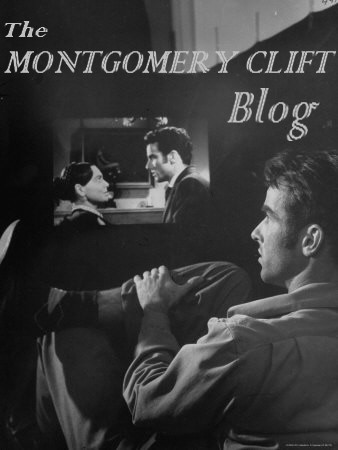



.-+albornoz+(4)+BLOG.jpg)
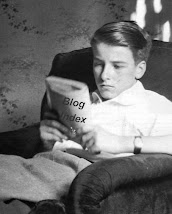
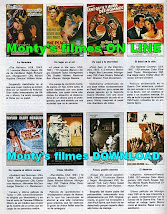


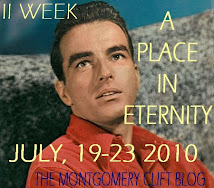











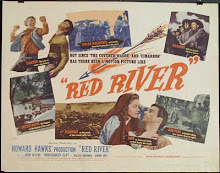
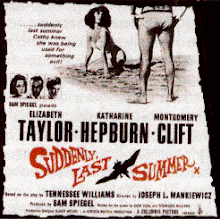



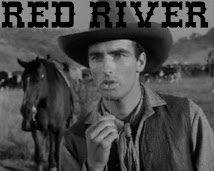
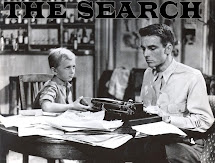

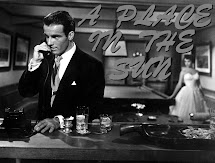2.jpg)
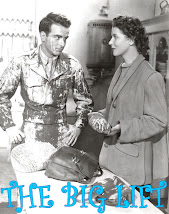.jpg)
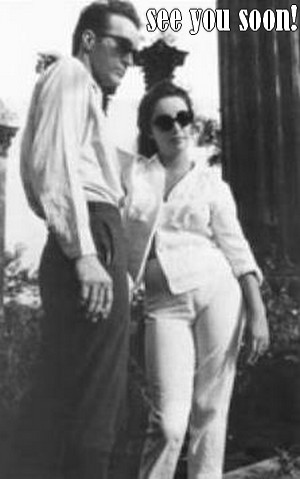

.jpg)


No hay comentarios:
Publicar un comentario